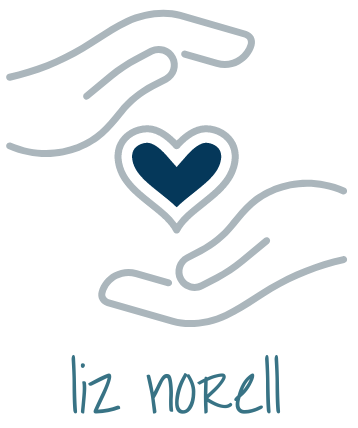I’ve wanted to write this blog post for a long time. Maybe as long as a year — maybe more. But when I read the book No Hard Feelings: The Secret Power of Embracing Emotions at Work, by Liz Fosslien & Mollie West Duffy, I knew it was time.
But any time you want to write about emotions and work, it’s… um, tricky. Especially if you are writing about emotions at your current workplace. Extra-especially if you want to keep your job. Extra-extra-especially if you L-O-V-E your work.
So let me begin this potentially fraught blog post by saying the following:
- I’m going to be deliberately vague in places.
- I’m writing this 100% absolutely NOT as a representative of my current employer.
- I L-O-V-E my job, (almost all of) my colleagues, and my employer.
- The goal of this post is to share things I’ve been thinking about related to how we perceive, include/avoid, and use emotions in the workplace. It’s not to criticize any particular person or practice.

The importance of trust
Fosslien & West Duffy begin their chapter on motivation by relating the story of a pilot program implemented at Best Buy headquarters after a survey indicating employees overwhelmingly supported this statement: “Trust me with my time. Trust me to do my job and I will deliver results and be a happier employee to boot.”
As described in No Hard Feelings, the Best Buy HR team created a program called ROWE (Results-Only Work Environment), which had 13 key guideposts, some of which I’ll share below:
- People at all levels stop doing any activity that is a waste of their time, the customer’s time, or the company’s time.
- Employees have the freedom to work any way they want.
- People have an unlimited amount of ‘paid time off’ as long as the work gets done.
- Nobody talks about how many hours they work.
- Every meeting is optional.
- There are no work schedules.
- There is no judgment about how you spend your time.
Can you even imagine this world?! I cannot. The managers were pretty darn freaked out by this ROWE thing. But it turned out to be a massively popular and financially sound decision; the company estimated it saved them $2.2 million over a three-year span, and overall employee productivity and happiness soared. (When a new CEO came into the company, he nixed the program, probably (people guessed) to look tough.)
When I read this story in chapter 3, I couldn’t even fathom what it might feel like to live in a world where I was truly, fully trusted to have the best interests of the organization at heart. I still cannot. Can you?
PS: You can read more about this in an Atlantic article from 2014, “This is What Real Work Flexibility Looks Like.”.
Feeling safe at work
What I especially love about this book is its focus on really tangible things that make work less stressful and more rewarding. Few of their foci do so more than when the authors talk about the concept of psychological safety. In essence, the idea here is that your relative education or experience levels do little to predict your success in any job; rather, outsiders can correctly assess whether a particular team will succeed by the extent to which its members feel safe to suggest ideas, admit mistakes, and take risks. When psychological safety exists, teams produce more, are more effective, and are happier. These teams have members that respect and encourage one another, members who are sensitive to one another’s feelings.
These things are true when we look at interpersonal dynamics within an organization, but leadership clearly plays an important role, too. Managers whose reports feel supported and motivated have a host of positive workplace outcomes; they’re happier, more productive, stay in the job longer, healthier, and better able to cope with the inevitable stresses of work. Responding to employee mistakes with patience instead of criticism engenders greater trust.
The authors recommend Simon Sinek’s TED talk, “Why good leaders make you feel safe.” I’ll second that recommendation.
Leadership in challenging times
Since mid-March 2020, every industry and sector of the economy has been forced to rethink how it relates to its workers. My own sector, higher education, is no different.
Facing a budget shortfall due to the one-two punch of significantly lower sales tax revenues (the primary funder of Tennessee government) and declining enrollments in a world with vastly fewer in-person class offerings, the institution where I work is anticipating, at minimum, a 12 percent reduction in our annual budget for the 2020-2021 academic year. This is going to force tough choices — no, that’s not strong enough, impossible choices — around what is essential to our operations and what is expendable.
The TED talk I mentioned above speaks so directly to this quandary facing leaders (and the non-leader authorities, to use Sinek’s language) across the country. How do employers engender positive workplace morale and employee trust in a time when everyone has lower revenues and greater uncertainty?
Never before have I sensed the need for courageous, empathetic, truly vulnerable leadership than I sense right now. When facing threat — be that physical threat from a predator in our environment or merely the possibility we might have to have a difficult conversation with someone we know — our ability to keep executive functioning online in our brains declines. We become more reactive and less able to control our expression of emotions.
What about higher education?
I am worried that the dysfunction that widely characterizes power dynamics on college campuses — and I’m speaking quite broadly here, not specifically about my own ‘chain of command’ (a phrase I loathe, btw) — will only exacerbate the challenges that lie ahead. And as Sinek indicates in his TED talk, the true leaders among us — the ones who will sacrifice to help others to their left or right — are often not the ones who are empowered to make decisions for their teams. The long-term consequences of this belt-tightening ahead could degrade the already-low morale found in many an academic department.
But I digress. This wasn’t meant to be a downer of a blog post. Instead, my intention — perhaps now lost in the above paragraphs?? — was to issue my own non-specific call for true, courageous, trust-based leadership on college campuses around the country.
Our students come to us to learn and grow as people, to obtain skills and knowledge that will earn them greater success and satisfaction in their futures. We do those students no favors by continuing to tolerate campus cultures that lack psychological safety, widespread trust and goodwill, and spaces for vulnerability and expression of emotion.
Indeed, I believe we have a moral responsibility to do this important work NOW, more than ever, to demonstrate to our campus communities — and our broader national community — that we truly are stronger together, genuinely together, than we are when we are competing for limited resources in an every-man-or-woman-for-themselves sort of way.
Two tangible tips
- When negotiating salary, try this line: “I don’t want my salary to be a distraction to me while I’m in this role.” In so doing, you’re making clear that you empathize both with your own position and the position of the hiring authority. You want to focus on your job, not on whether you’re being fairly compensated. I LOVE THIS TIP. (page 98)
- Appoint a person in each meeting to be an observer of group dynamics–keep track of who’s talking a lot / not much, who is left out of conversations, if someone keeps interrupting/talking over others, and the general group dynamics. At the end of the meeting, the objective observer then suggests ways to improve the overall group conversational dynamics. (p. 191)

A final note
In February, I was at the ATD DREAM 2020 conference — an incredible gathering of mostly community college faculty and leaders, people determined to improve student success and outcomes on our campuses. I attended a session where a handful of presenters did one of those 20-slides-at-20-seconds-per-slide presentations on a range of topics around faculty development.
One of my most profound takeaways of the conference came in that session. A faculty member was talking about how her college had designed a leadership training program for faculty, so that if and when they moved into leadership positions, they’d be well-equipped with leadership tools.
A member of the administration said to this team, “What if we train them and they leave?”
The faculty member responded, “What if we don’t, and they stay?”



